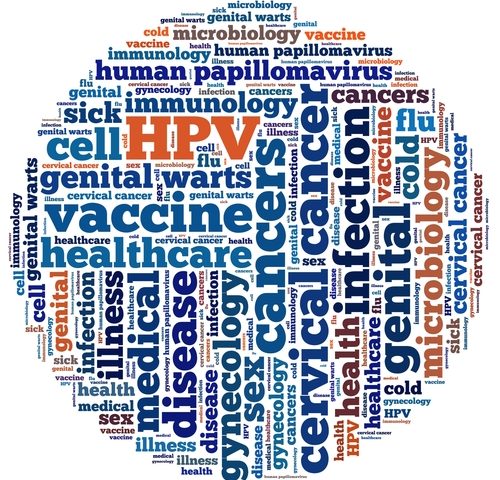A new global guideline aimed at clinicians worldwide offers evidence-based recommendations on the use of the human papillomavirus (HPV) vaccine for the primary prevention of cervical cancer.
The guideline, issued by the American Society of Clinical Oncology (ASCO), titled “Primary Prevention of Cervical Cancer: American Society of Clinical Oncology Resource-Stratified Guideline,” was published in the Journal of Global Oncology.
This new guidance considers the varying levels of economic and structural resources, and outlines four levels of recommendations based on each country’s healthcare system resources. The four tiers are basic, limited, enhanced, and maximal.
Independent of resource settings, the new ASCO guideline says that “two doses of HPV vaccine are recommended for girls aged 9-14 years old, with an interval of at least 6 months and up to 12-15 months between doses. Girls who have HIV should receive 3 doses.”
For maximal and enhanced resource settings, the guideline recommends that “if girls are age over 15 years and received their first dose before age 15 years, they may complete the two-dose series; if no doses were received before age 15 years, three doses should be administered; in both scenarios, vaccination may be through age 26 years.”
For limited and basic settings, the guideline states that “if sufficient resources remain after vaccinating girls age 9 to 14 years, girls who received one dose may receive additional doses between age 15 and 26 years.”
The ASCO guideline for vaccinating boys states that in all settings (excluding basic settings) boys should be vaccinated if there is at least a 50 percent coverage in priority female target population, and sufficient vaccination resources.
Both primary and secondary HPV prevention efforts differ among world regions, and among and within countries. Approximately 85 percent of cervical cancers and 87 percent of cervical cancer-related deaths occur in less-developed regions. As a result of these disparities, ASCO’s Resource-Stratified Guidelines Advisory Group chose cervical cancer as a priority topic for guideline development.
“Because resource availability varies widely, both among and within countries, we need to adjust strategies to improve access to HPV vaccination everywhere,” Dr. Silvia de Sanjosé, co-chair of the guideline’s Expert Panel and head of the Cancer Epidemiology Research Program at the Institut Català d’Oncologia in Barcelona, Spain, said in a news release. “This guideline is unique in offering cervical cancer vaccination recommendations that can be adapted to different resource levels and we expect it to have a major impact on the global health community.”
HPV infection is the main cause of cervical cancer and their immediate precursors. Complete HPV vaccination coverage in the female population could reduce cervical cancer cases by an estimated 90 percent worldwide using existing vaccines. In this context, the new ASCO guideline recommends HPV vaccinations for both genders to prevent cervical cancer in women and possibly HPV-related cancers in men.
“Although HPV vaccine has been around for more than a decade, the uptake of the vaccine has been less than ideal in many places, including in high-resource countries such as the United States,” said Dr. Silvina Arrossi, Expert Panel co-chair and researcher at the Instituto Nacional del Cáncer in Buenos Aires, Argentina. “As an organization of cancer doctors, ASCO continues to endorse HPV vaccination programs and efforts to help spare more women around the world from this very difficult cancer.”
For guideline guidance, ASCO convened a multidisciplinary, multinational panel of leading HPV and HIV vaccine specialists, as well as experts in the areas of oncology, cancer control, obstetrics/gynecology, epidemiology/biostatistics, public health, health economics, behavioral/implementation science, and patient advocacy. The Expert Panel reviewed existing guidelines, systematic reviews, and cost-effective analyses published from 1966 to 2015.

